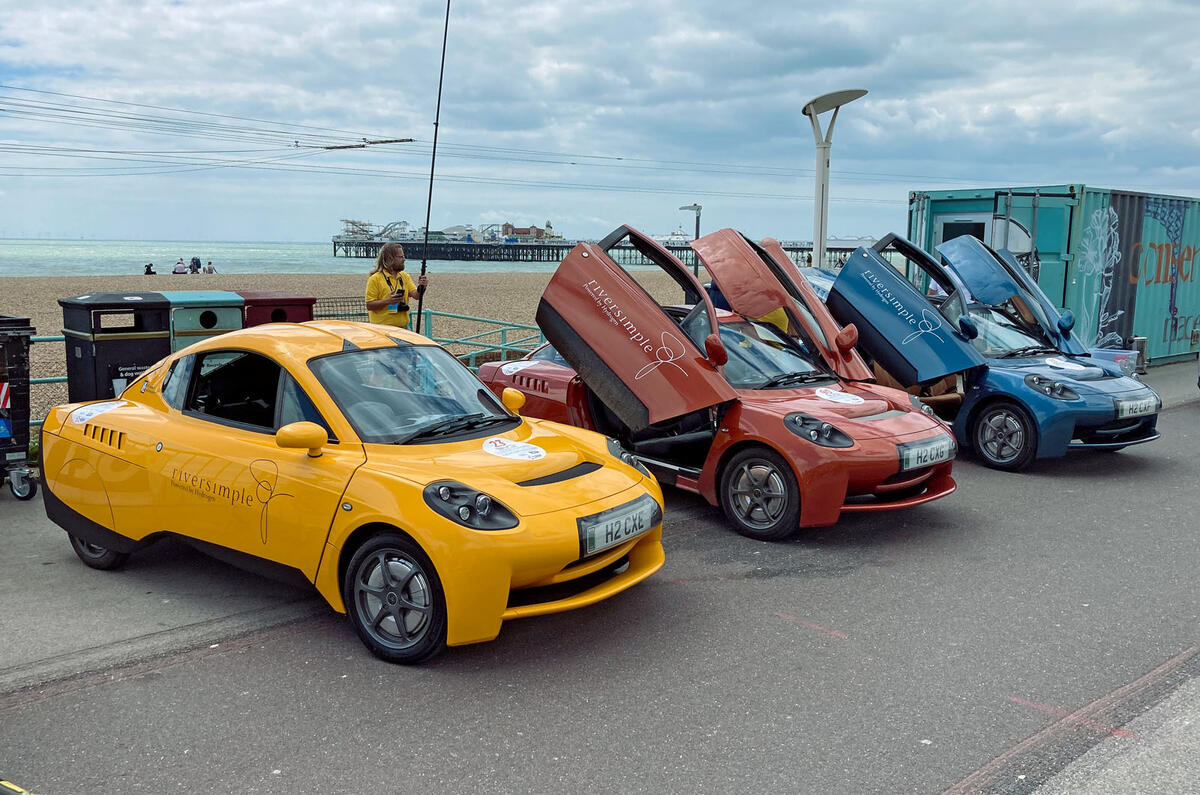Riversimple, the UK’s only manufacturer of hydrogen electric road cars, is planning a development of its Rasa model but wants to spearhead that launch with a prior batch of 10 to 20 radically designed hydrogen supercars, intended to showcase the company’s grasp of delivering range, in a zero emissions package, without excessive weight.
Hugo Spowers, Riversimple’s founder and CEO, wants the new supercar to sell as much on beauty as efficiency so he has launched a design competition for postgrad students at Coventry University’s School of Automotive and Transport Design, expecting around a dozen entrants to develop interior and exterior design themes for the yet-unnamed supercar, between September and November.
Autocar will follow the selection of the winning entries, joining Riversimple’s bosses as they choose. The project will also be overseen by Andreas Mindt, head of Volkswagen Design who, incredibly, participated in a similar Autocar-backed competition as a student in 1992 and had his own work published in these pages. He heard about the Coventry-Riversimple’s project and asked to be involved.
“Most student design competitions are entirely theoretical,” says Hugo Spowers, “but this one’s real. If our entrants come up with designs we like and which we think could work, we might well adopt them for production.”
Spowers acknowledges that the young designers may find his styling requirements difficult to fulfil: he wants the shape to be simple and elegant, avoiding the complex and aggressive design styles of many modern supercars. For both aesthetic and packaging reasons it can’t be too cab-forward (“more Miura than Countach”) but it can’t be retro, either. This is a modern car using industry-leading technology so classical looks won’t be appropriate.
Riversimple’s supercar will carry its hydrogen fuel cell in the nose, and its supercapacitor bank, power electronics and fuel tanks behind the occupants. Power is via four compact inboard motors, with the brakes inboard as well. Spowers likes the idea of classical gull-wing doors with a high sill for his supercar, both for structural reasons and easy access, but he wants to see if the student-designers have other ideas.
Riversimple has already issued a basic specification for the car. Its overall dimensions will be surprisingly close to those of the classic Ferrari Dino 246GT of the 1980s — an overall length around 4.2metres, a width of 1.7metres and a height of 1.1metres.
However, the car’s most spectacular statistic is its weight: Spowers says his supercar can hit a target weight of just 620kg, one third the weight of a supercar today and a bit more than half that of a Dino 246. On its own, the carbon fibre chassis will weigh just 70kg. Tyres will be relatively modest 185/40x17 affairs. No more rubber is needed because of the car’s extremely light weight, biased more than 50% to the rear.
By comparison with conventional EVs, the fuel cell’s static power output of 39bhp seems laughably low, especially for a supercar, but in reality it can produce around 270bhp in 10 second bursts. This, plus the car’s low weight, four-wheel traction and the instant torque deployment of electric motors promises surprising acceleration: a 0-60mph time of 3.5seconds, with an even more impressive 6.4seconds for a 0-100mph sprint. Top speed will be limited to about 100mph on grounds that it is as much as the market needs. Providing more would increase cost, weight and fuel consumption.
Riversimple isn’t yet putting a price on its new supercar, saying only that its rarity and sophistication means it “won’t be cheap”. Think well into six figures, though. The company is about half-way through its latest funding round, aiming to raise around £5million from investors. Meanwhile, planning and engineering of both the new staple model and the supercar (which will share components and technology) is advancing.
When will Riversimple’s hydrogen supercar see the light of day? Given the funding issues, Spowers and his colleagues, who have been building hydrogen cars for more than 15years, know better than to over-activate the optimism. But if funding arrives on time, they believe the supercar’s debut could be three years away. We’ll know more soon.




Join the debate
Add your comment
Riverside manufacturer of hydrogen cars, emmm that's playing very lose with words.